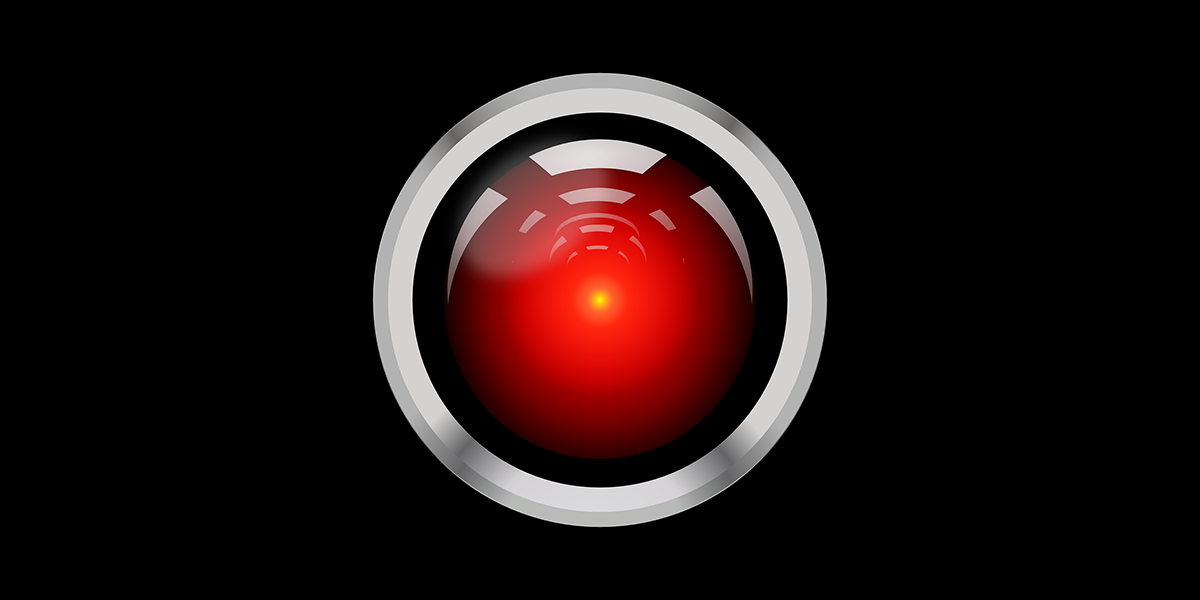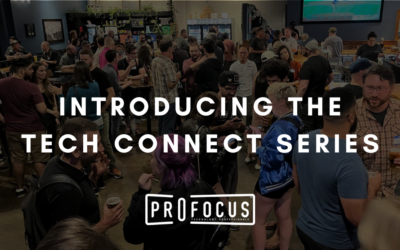If you haven’t lived under a rock for the past few years, you’ve probably heard about something called “IoT”, short for Internet of Things.
Let’s go to a formal definition:
“The Internet of Things (IoT) is a system of interrelated computing devices, mechanical and digital machines, objects, animals or people that are provided with unique identifiers and the ability to transfer data over a network without requiring human-to-human or human-to-computer interaction.”
It’s actually a fairly straightforward concept.
Devices can now communicate to each other without human intervention.
Now before all your Skynet/Terminator fanboys out there get alarmed, IoT is supposed to be a benevolent technology … it’s purpose is NOT to enslave humanity (as far as you know).
Some of you out there might actually think IoT is nothing new. After all, isn’t that what computers have been doing since the earliest days of the internet, and earlier?
You’d have to go back quite far in history to find computers that were only able to operate standalone and not be able to communicate with other computer systems, all the way back to the 1940s and 1950s.
Even at the dawn of the personal computer age of the 1970s and early 1980s, it didn’t take long for personal computers to be able to communicate with each other, thanks to the power of modem technology, albeit SUPER SLOW telephone lines. (I still miss that handshake connection noise from modems when they successfully made a connection to their destination endpoint).
So if even the earliest first generation mainframe computers and the early personal computers of the 1970s and 1980s were able to communicate with each other, what’s with all the big hoopla of this Internet of Things phenomenon?
Well, the excitement about Internet of Things is all about that last word … “Things”.
As previously mentioned, traditional computers have had the ability to communicate with each other.
But currently, technology has progressed far beyond traditional computers and laptops these days.
Nowadays, many cars have onboard touchscreen devices that allow you to stream music, make voice calls, use point by point GPS navigation systems and many other useful functions.
Heck, modern cars are practically computers on wheels nowadays. You can download firmware software updates your car needs over the air, thanks to the power of the internet, thanks to the power of IoT.
Our televisions, which used to be analog devices that were tuned into analog frequencies, are now super connected little mini computers that stream content from the internet down to your tv device.
Heck, even our personal everyday appliances are joining the IoT revolution. Now even our fridges have the ability to communicate with other devices over the internet! These smart fridges can sense what kinds of products you store in your fridge and keep track of the stock level.
So it can tell when items get depleted from your fridge, or keep track of when food items go bad, based on the expiration date. It can warn you, via notifications when this happens or when you’re running low on your meat, eggs and whatever other food items you stock on a regular basis.
It’s not too far-fetched to imagine IoT even going further than this … how much harder would it be for an IoT capable device like a smart fridge to keep track of your shopping habits and what kinds of food items tend to purchase?
What if, over time, based on your shopping habits, habitually query the internet for the items you like to purchase on a regular basis, and find the best sales at the best supermarkets and stores for your items, and send you an e-mail or text notifications?
Going even further, there’s nothing stopping an IoT capable device to tie itself with an authorized bank account or credit/debit card. So now, say there’s some special sale on one of the items you habitually stock in the fridge … you program your IoT fridge to automatically make a purchase and when the sale price for that item drops to a certain threshold, that triggers it to automatically make an authorized payment for you.
And thanks to the myriad of automated food delivery services, it could also trigger an automatic food delivery of those items directly to your doorstep! George Jetson, eat your heart out!
What if that same IoT fridge tracked the food items you purchased over time, and monitored your diet? Say you wanted to lose weight. You could create a weight loss program with whatever dietary parameters you’d want to program into it.
Say you’re trying to lose weight, and you want to go high protein, low carb. So you program your IoT fridge to monitor your purchasing habits and notify you via some sort of e-mail or text notification when you purchase something outside of your dietary restrictions.
Wait…is the HAL-9000 SmartFridge right around the corner??
(Me) “Open the smart fridge door, HAL”
(HAL-9000 Fridge) “I’m sorry, Dave, I can’t allow that, you’re already over your 20 carbohydrate gram limit for the day.”
Think about the goldmine of data your IoT fridge would generate if it stored your habitual shopping habits over time. How valuable do you think that would be to grocery and supermarket chains? Or advertisers in general?
Let’s say an IoT fridge takes this habitual shopping information, and transfers the data to your IoT enabled smart TV.
Now TV advertisers take that data, and tailor your commercials to the things you purchase from your IoT smart fridge.
So if you frequently purchase something like, say, bacon, your IoT smart fridge communicates that data to your IoT smart TV and you’re suddenly seeing commercials for bacon from Jimmy Dean, Hormel, and a host of other bacon producers.
So say you find a particular commercial that catches your interest … you’re out of bacon and you suddenly start jonesing for bacon…you tell your smart TV you want to make an instant purchase.
So it communicates your purchase intent to the company that catches your interest….since your bank account is already tied into your IoT smart home network, it submits an internet order to the company, and a personal delivery drone gets your home address, and using GPS tracking satellite technology, flies to your address and delivers your order.
Sounds too far-fetched?
Don’t be too skeptical…we already have the core technology and infrastructure in place to allow all of this to happen.
We’re only just scratching the surface of IoT. It’s like the dawn of the personal computer and the internet. I believe we’re at the cusp of a new wave of super-connected devices that will be able to communicate with each other in ways we’ve never thought possible, even only a few years ago.
Let’s take cars. We’re already well on our way into a new revolution in car technology.
Like it or not, gas-powered cars will sooner or later be replaced with alternative power sources like electric, and Tesla is already blazing the path to that future.
These new IoT capable cars are practically computers on wheels these days. They have onboard touchscreen-enabled computers that have 24/7 internet connectivity.
You can play streaming music, use turn by turn GPS navigation, make phone calls to others, and many other features.
But I think that’s only just scratching the surface of what’s possible with IoT connectivity.
Say you’re driving downtown, which happens to be located near a river, so there’s lots of bridges scattered throughout the city.
Say you need to cross the river, but the bridge you usually drive over, has to go up, to allow a ship to sail underneath.
Instead of only finding that out, when you reach that bridge, the bridge automatically broadcasts out a notification message within the city limits, that the bridge is going up.
Every IoT enabled vehicle, including yours, gets a notification message the bridge is going up. Your vehicle queries for other bridges which are still in the down position for driving, and your car automatically routes an alternative path for you.
Think about how much time it saves you from waiting at that bridge, and contributing to the overall congestion as the drawbridge waits for the ship to sail through.
When the majority of drivers use IoT enabled vehicles, you’ve suddenly got a situation that becomes enormously valuable to the overall city infrastructure.
City planners could better compensate for things like street and road repairs, construction work, or other disruptive events like power outages, and automatically broadcast out messages to all IoT enabled vehicles to reroute to alternative destinations, and help to avoid city grid traffic jams.
When accidents happen on major freeways and highways, automated broadcast messages could be sent to all IoT enabled vehicles to reroute to alternative roads, and help to reduce road congestion.
When vehicles become completely self-driving and autonomous (and this will happen, guaranteed, it’s only a matter of time), IoT enabled vehicles will have no choice but to get rerouted, according to traffic, weather and other road conditions and events.
Say an IoT enabled vehicle drives over a rough pothole. The vehicle would automatically send a broadcast message to the city infrastructure that a pothole was detected, and the road crews could immediately respond and deal with it.
We’re only beginning to see what’s possible with IoT, and it’s going to be a very exciting time to witness all these innovations take place.
At the same time, with every new ushering of technology, will bring it’s own set of problems and issues to deal with.
Security will be a HUGE issue with IoT. Think about the potentially massive amount of data traveling across IoT enabled networks, and think about how valuable that kind of data would be to hackers.
It’s a rare day that we don’t already hear about huge security data breaches by nefarious hackers.
The IoT future will be an absolute GOLDMINE for hackers and others with nefarious purposes.
I would not be surprised to see whole new branches of government agencies created to establish regulations and governance over this new and burgeoning IoT technology.
Even so, it will be exciting to see how this all unfolds in the near future.
In the meantime, time for a midday snack.
Hal, open the fridge, I’m ready for a sandwich.
Hal? Hal? Open the fridge door, Hal. Hello? Hal?




